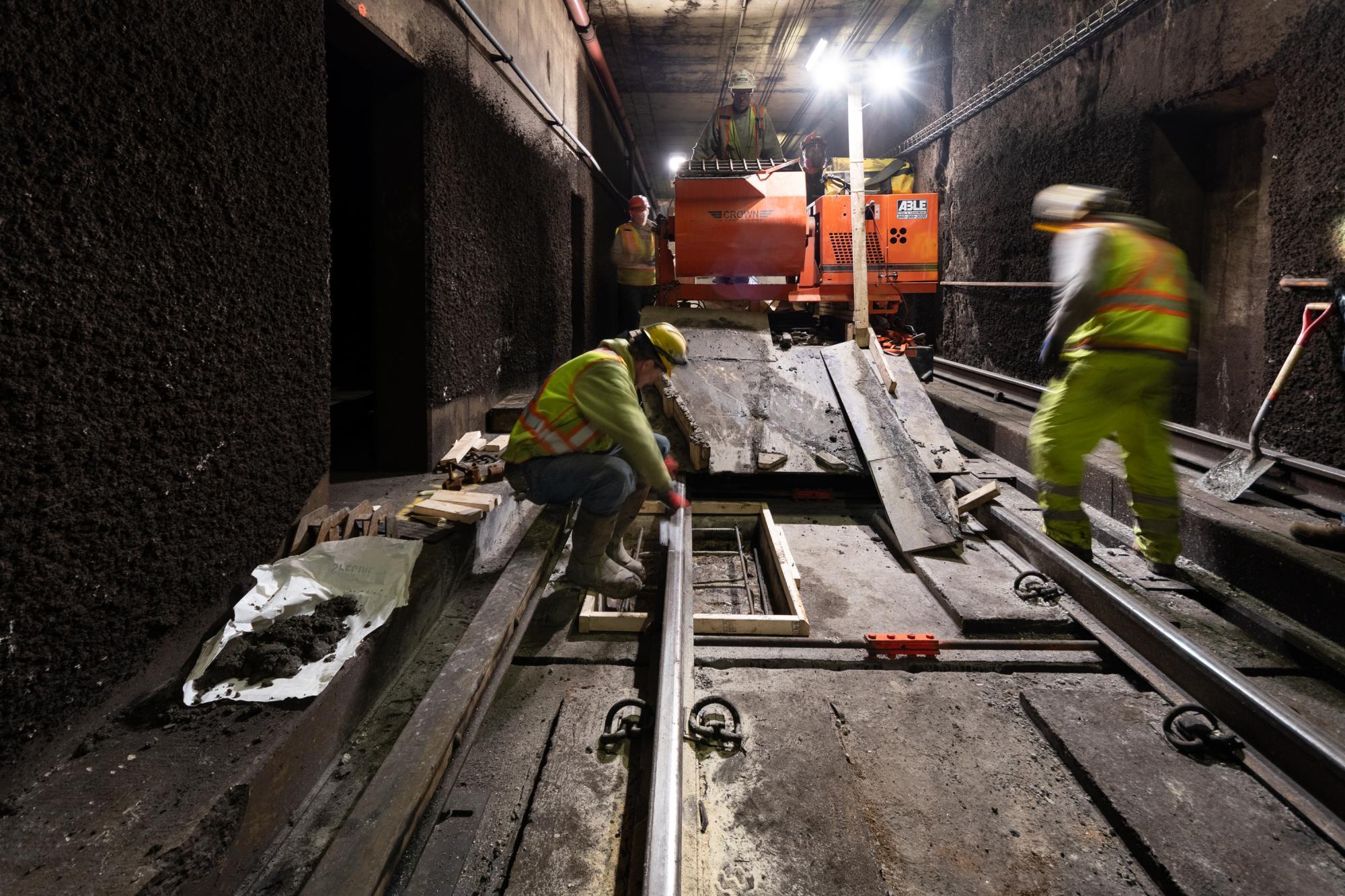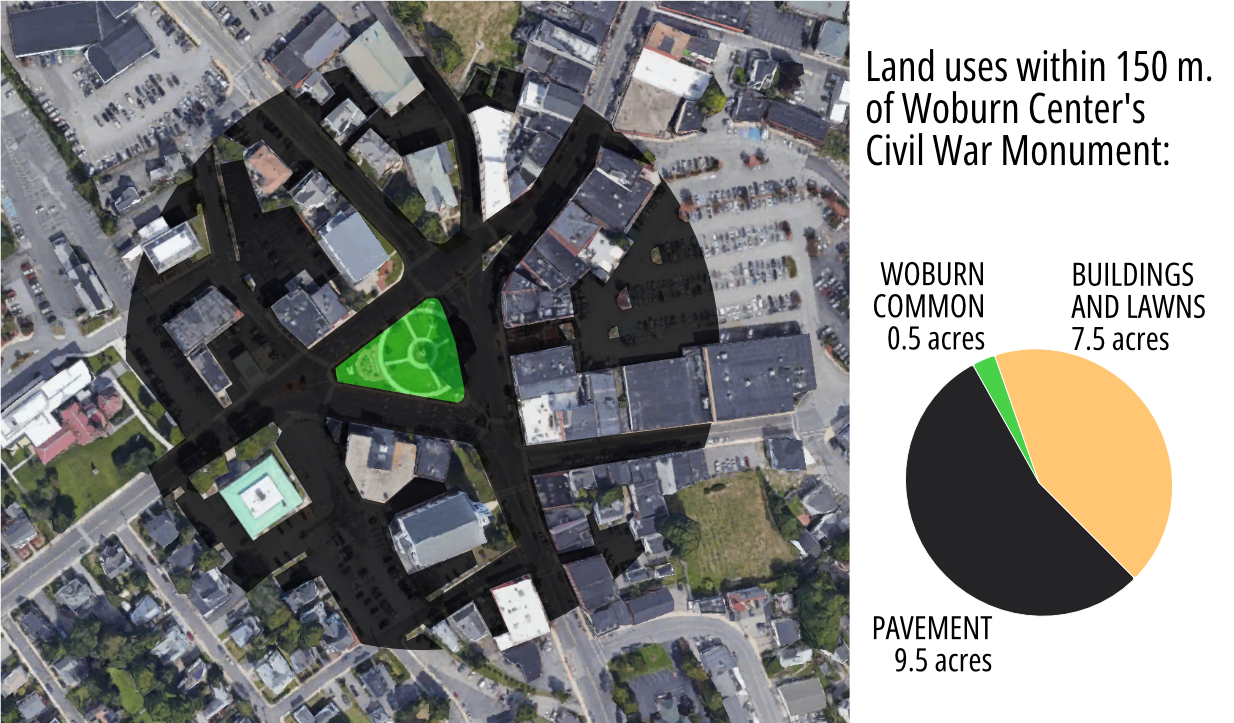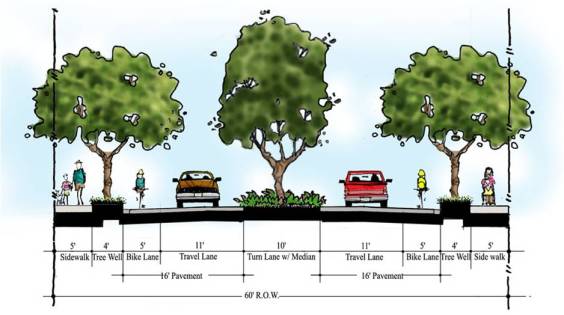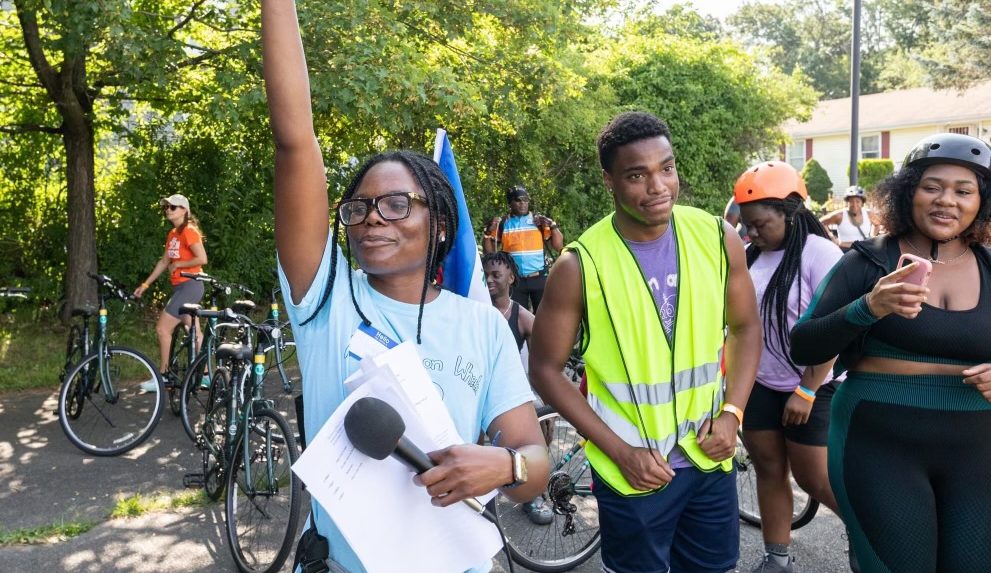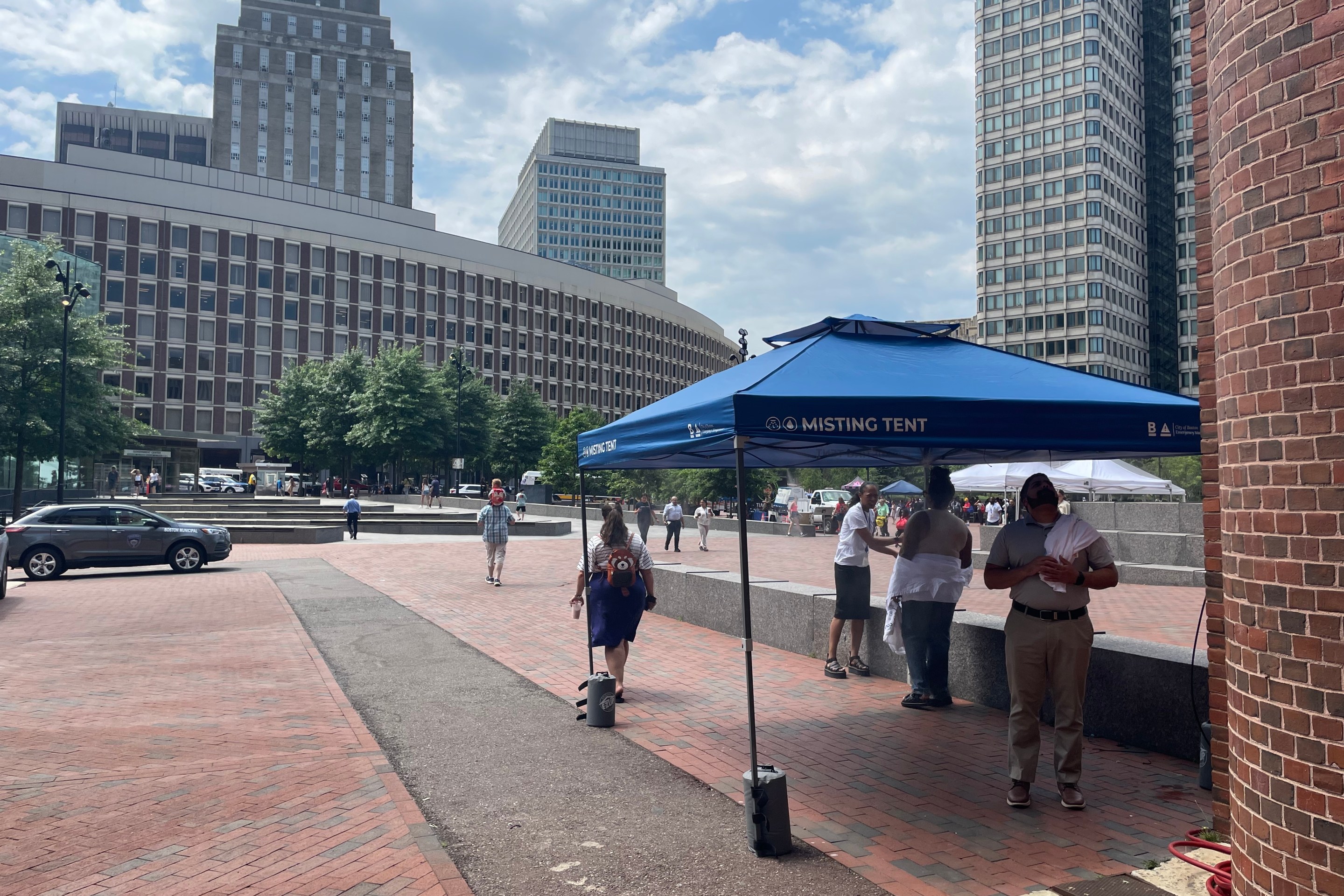This article is adapted from an MBTA press release.
The MBTA today announced that it had eliminated nine more speed restrictions from the Red Line between JFK/UMass and Downtown Crossing after closing the central portion of the subway line for track work over the weekend.
The T had replaced Red Line service with shuttle buses between Park Street station in downtown Boston and JFK/UMass station in Dorchester during evenings from November 14-16 and for the entire weekend on November 18 and 19.
During those closures, MBTA crews were able to replace over 2,000 feet of rail and 115 ties, and upgraded tracks to a state of good repair as part of the planned work.
The T had planned to focus its work on removing six speed restrictions between South Station and JFK/UMass.
But crews were able to also take advantage of the unencumbered access to fix another three speed restrictions near Downtown Crossing Station, and to perform a variety of in-station maintenance work at Broadway, Andrew, and South Station.
“The MBTA is proud to have completed this critical work, removing nine speed restrictions on the Red Line – which is three more than we set out to remove! Part of this success is the collaborative coordination between contracted work and our growing in-house Maintenance of Way staff," said MBTA General Manager Phillip Eng.
Today, less than 10 miles of Red Line track is currently speed restricted – the least since early March, when the MBTA first initiated slow zones systemwide.
The TransitMatters slow zone tracker, which is based on real-time train location data, suggests that the delay from slow zones on the Red Line has been cut by more than half since early September.
